
Sequential logic circuits
First Class
1
Dr. AMMAR ABDUL-HAMED KHADER

INTRODUCTION
• Combinational Logic:
– Output depends only on current input
– Has no memory
– The design depends mainly on Logic Gates
• No way of remembering or storing information after inputs
have been removed.
• To handle this, we need sequential logic capable of storing
intermediate (and final) results.
• Sequential Logic:
– Output depends not only on current input but also on past input
values, e.g., design a counter
– Need some type of memory to remember the past input values
– The design depends mainly on Flip-Flop Circuit
2
Dr. AMMAR ABDUL-HAMED KHADER

Sequential Logic Circuits
3
Dr. AMMAR ABDUL-HAMED KHADER
Sequential circuits can be Asynchronous or synchronous.
Asynchronous
sequential circuits change their states and
output values whenever a change in input values
occurs.
Synchronous
sequential circuits change their states and
output values at fixed points of time, i.e. clock signals.
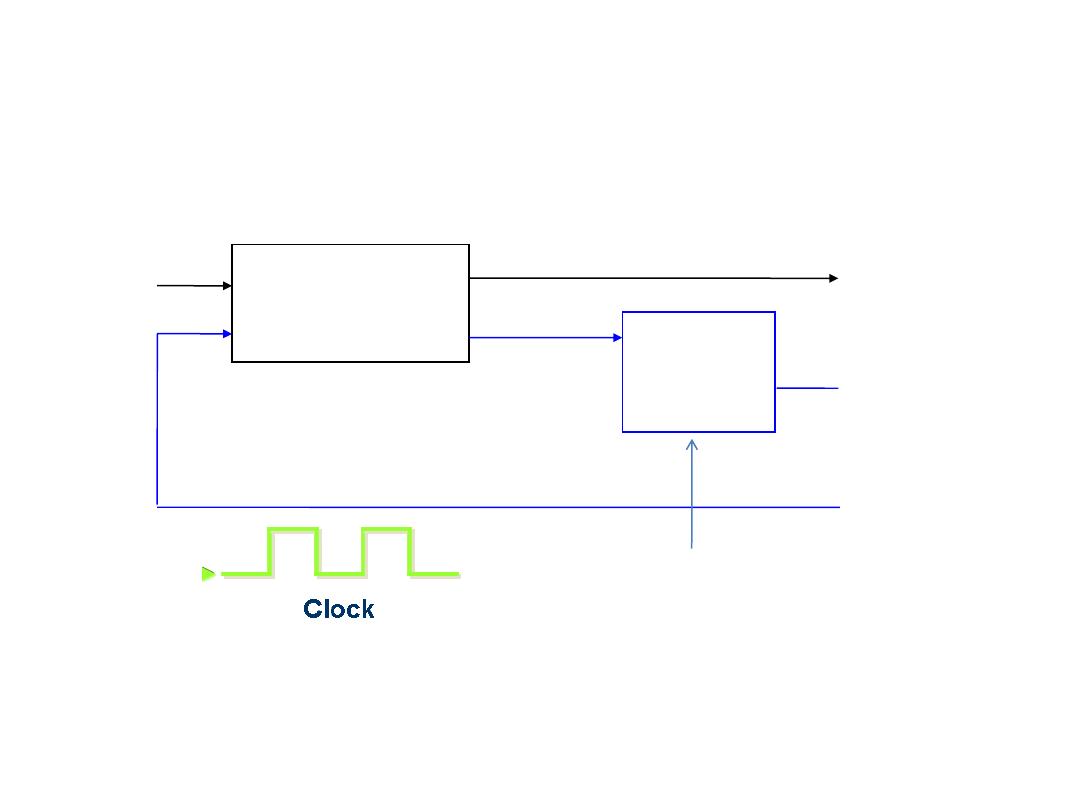
Sequential Logic Circuits
4
Dr. AMMAR ABDUL-HAMED KHADER
Combinational
circuit
Storage
Element
Flip Flops
Outputs
Inputs
Next
state
Present
state
Timing signal
(clock)
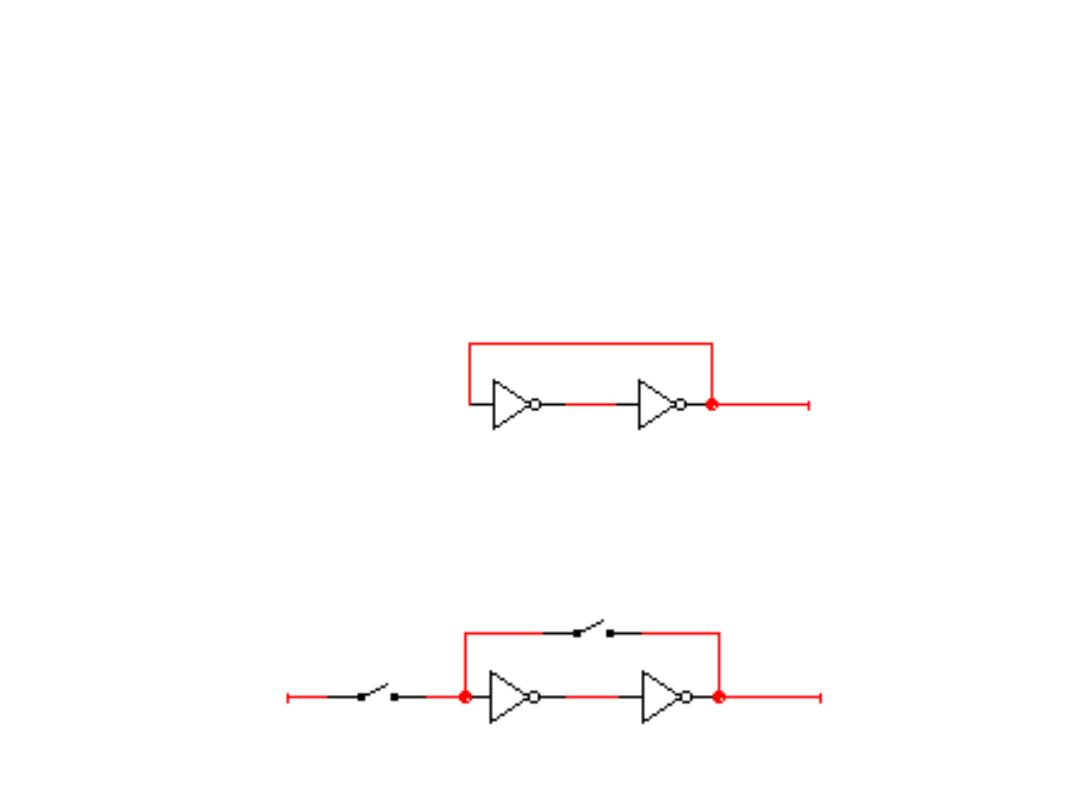
5
Dr. AMMAR ABDUL-HAMED KHADER
Storage Element
"0"
"1"
"stored value"
"remember"
"load"
"data"
"stored value"
• Two inverters form a static memory cell
– will hold value as long as it has power applied
• How to get a new value into the memory cell?
– selectively break feedback path
– load new value into cell

Sequential Logic Circuits
•
Multivibrators Logic Devices:
Bistable device: have two stable states, called SET and
RESET.
Monostable device: commonly known as the One-shot, it has
only one stable state.
Astable device: has no stable state and is used primarily as an
oscillator, which is a self-sustained waveform generator.
6
Dr. AMMAR ABDUL-HAMED KHADER
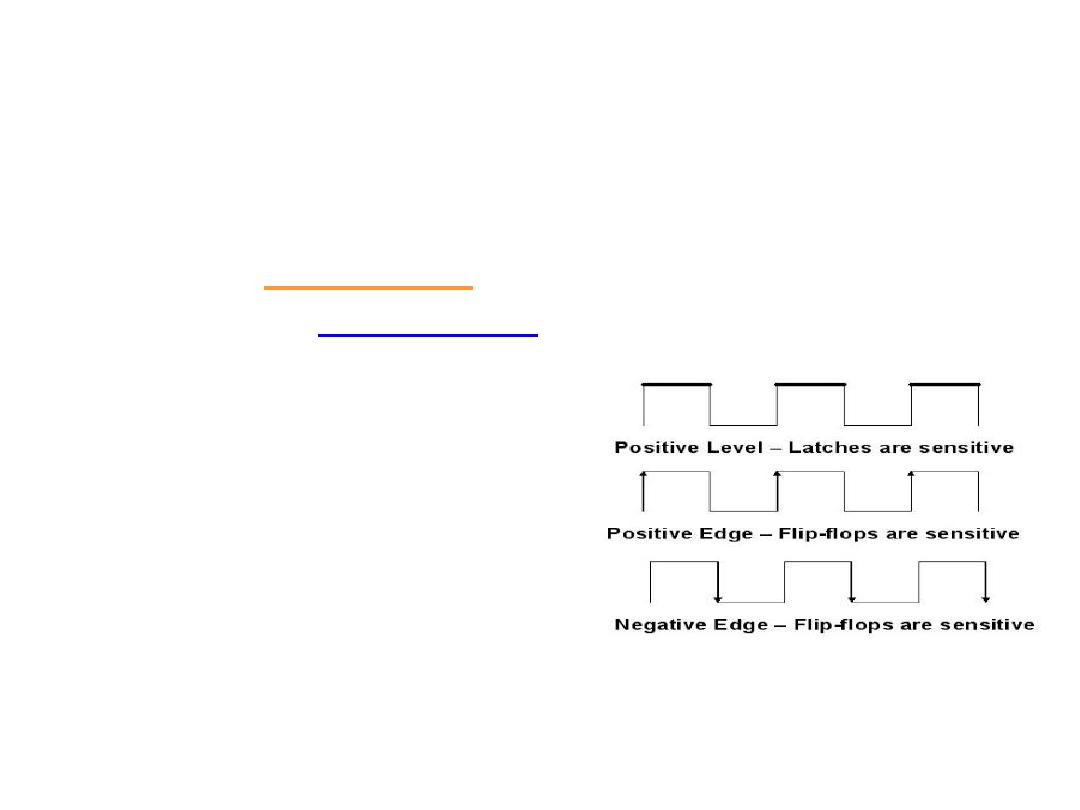
Storage Cells
• The two most popular varieties of storage cells used to build
sequential circuits are: latches and flip-flops.
– Latch:
level sensitive
storage element
– Flip-Flop:
edge triggered
storage element
• Common examples of latches:
S-R latch, \S-\R latch, D latch
(= gated D latch)
Common examples of flip-flops:
D-FF, D-FF with enable,
Scan-FF, JK-FF, T-FF
Dr. AMMAR ABDUL-HAMED KHADER
7
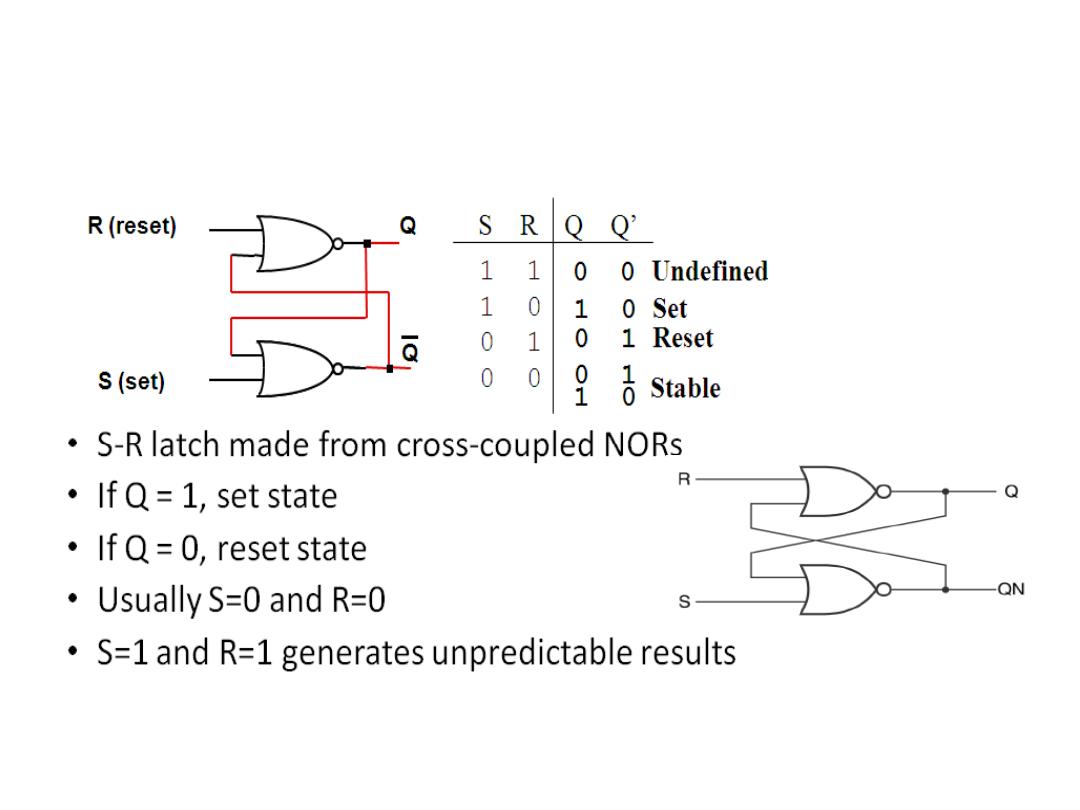
S-R Latch with NORs
Dr. AMMAR ABDUL-HAMED KHADER
8
- No change
- Not allowed
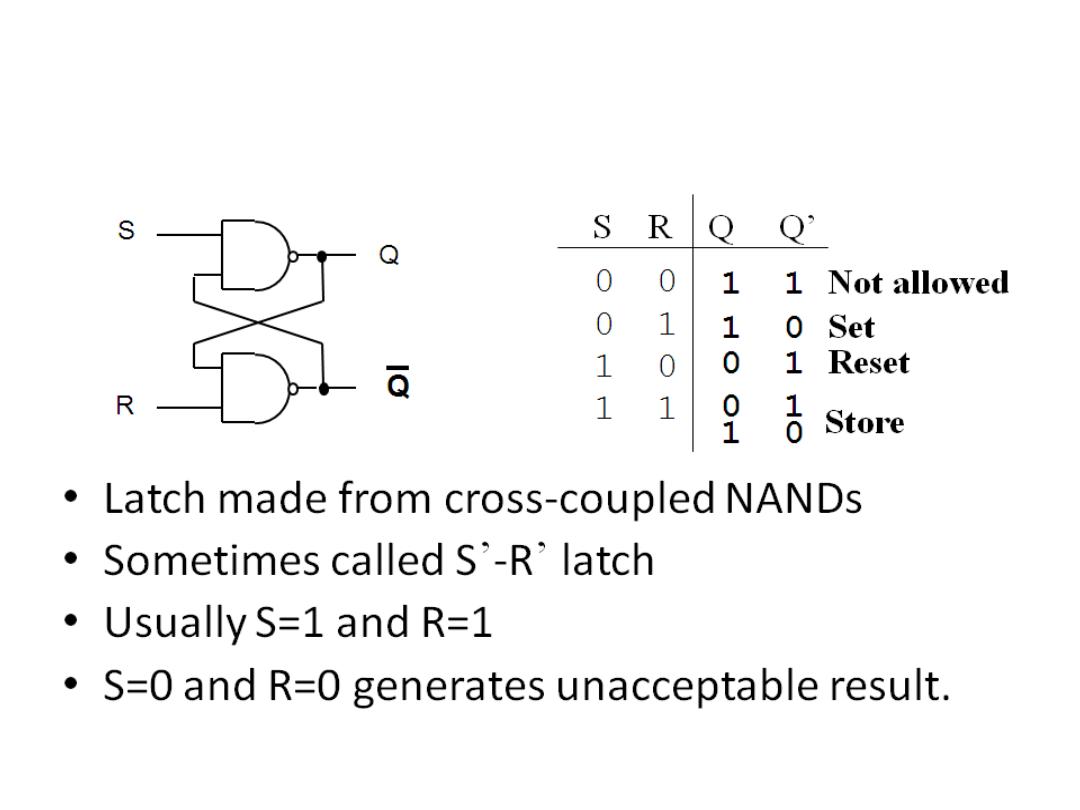
S-R Latch with NANDs
Dr. AMMAR ABDUL-HAMED KHADER
9
- No change
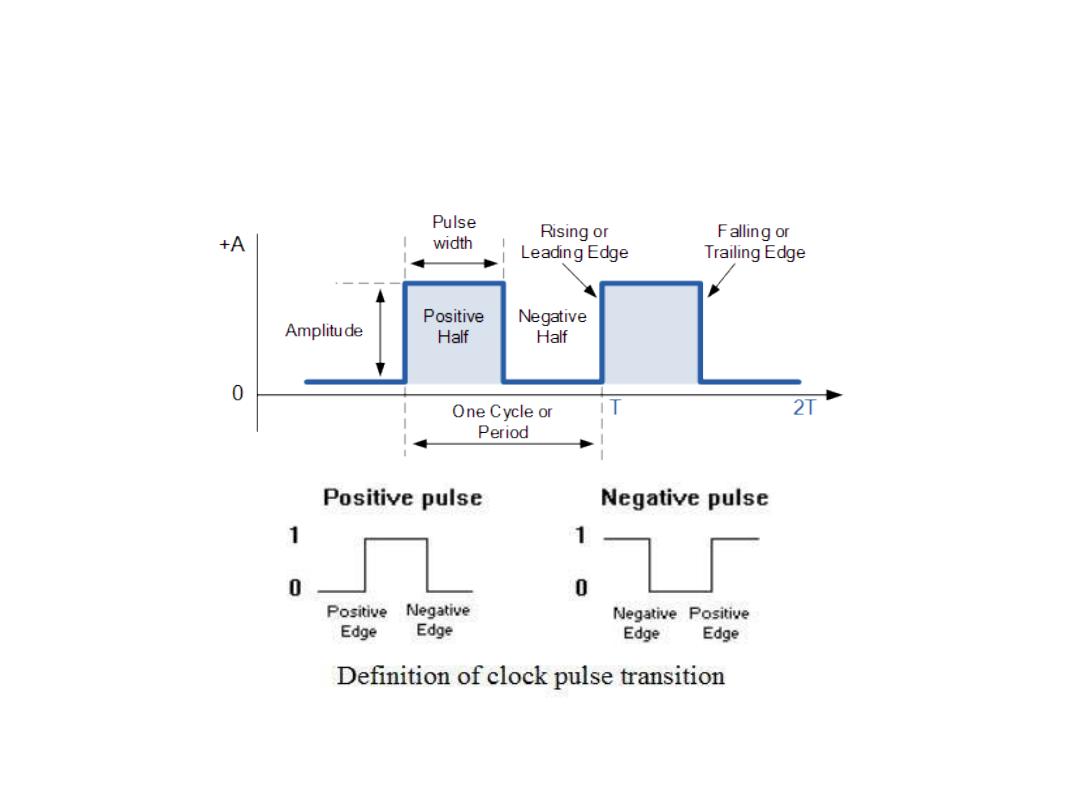
Clock Pulse Definition
Dr. AMMAR ABDUL-HAMED KHADER
10
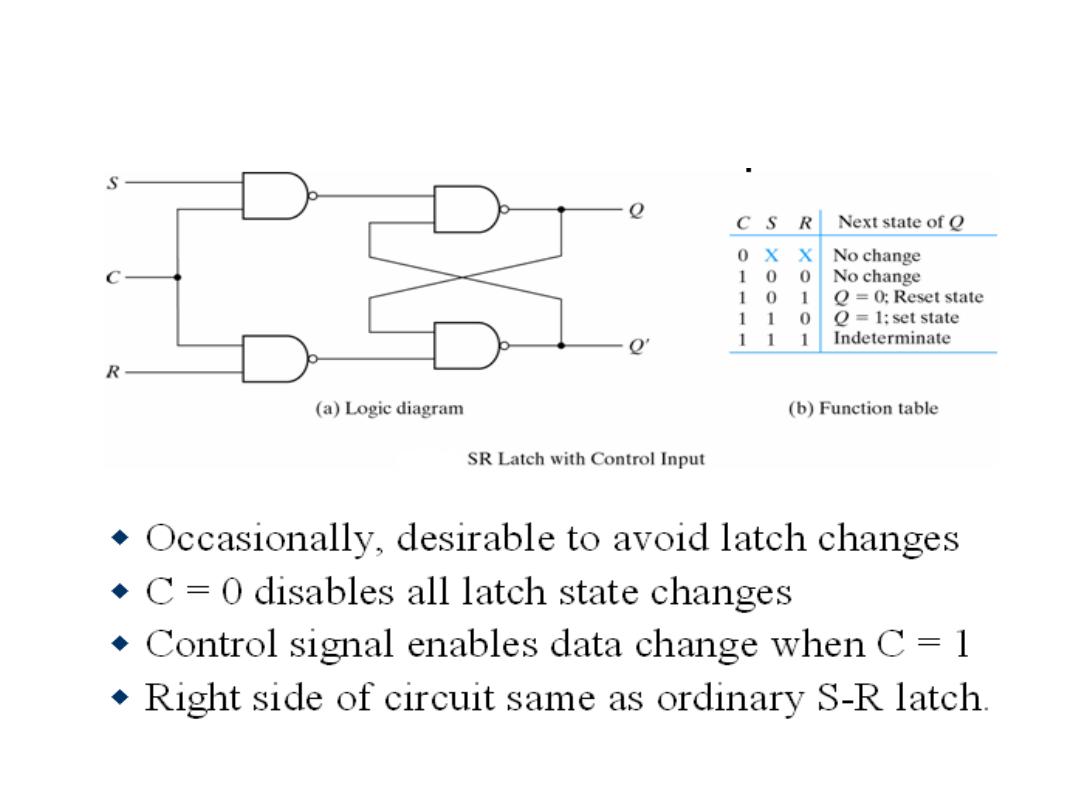
S-R Latch with Control Input
Dr. AMMAR ABDUL-HAMED KHADER
11
- Not allowed
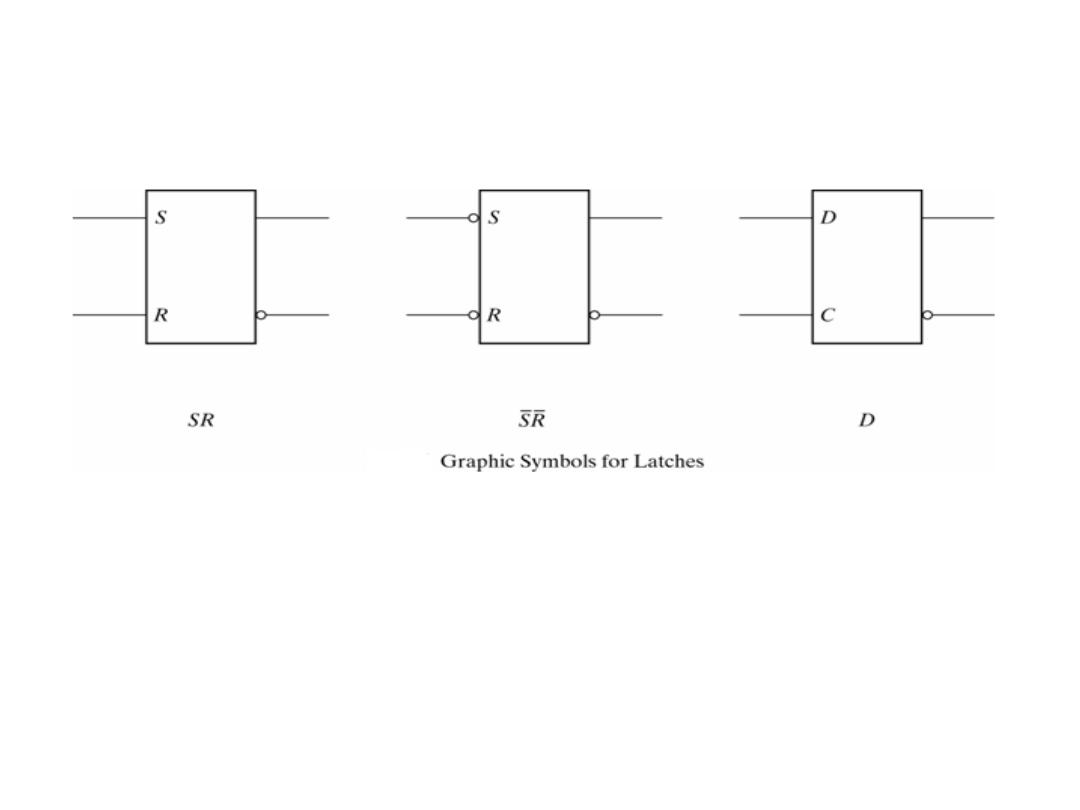
Symbols for Latches
Dr. AMMAR ABDUL-HAMED KHADER
12
• SR latch is based on NOR gates
• S’R’ latch based on NAND gates
• D latch can be based on either.
• D latch sometimes called transparent latch
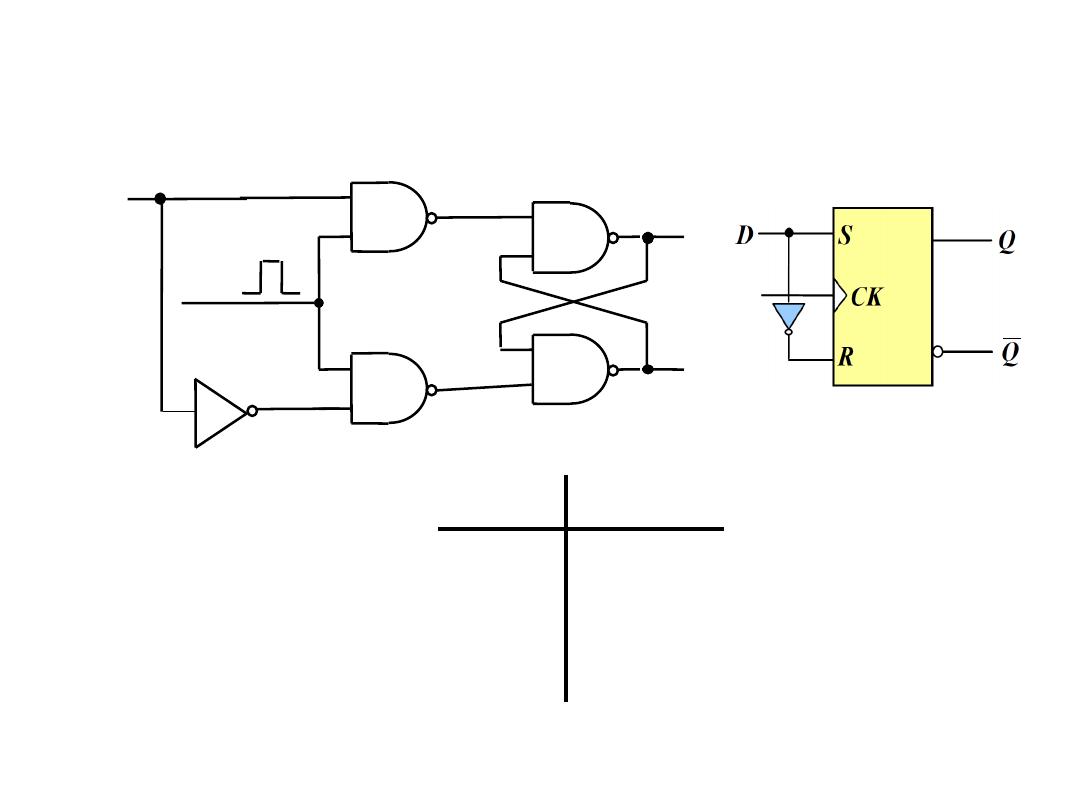
D Latch
Dr. AMMAR ABDUL-HAMED KHADER
13
Q
Q
’
S
R
Y
D
C
0 1 0 1
1 1 1 0
X 0 Q
0
Q
0
’
D
C
Q Q’
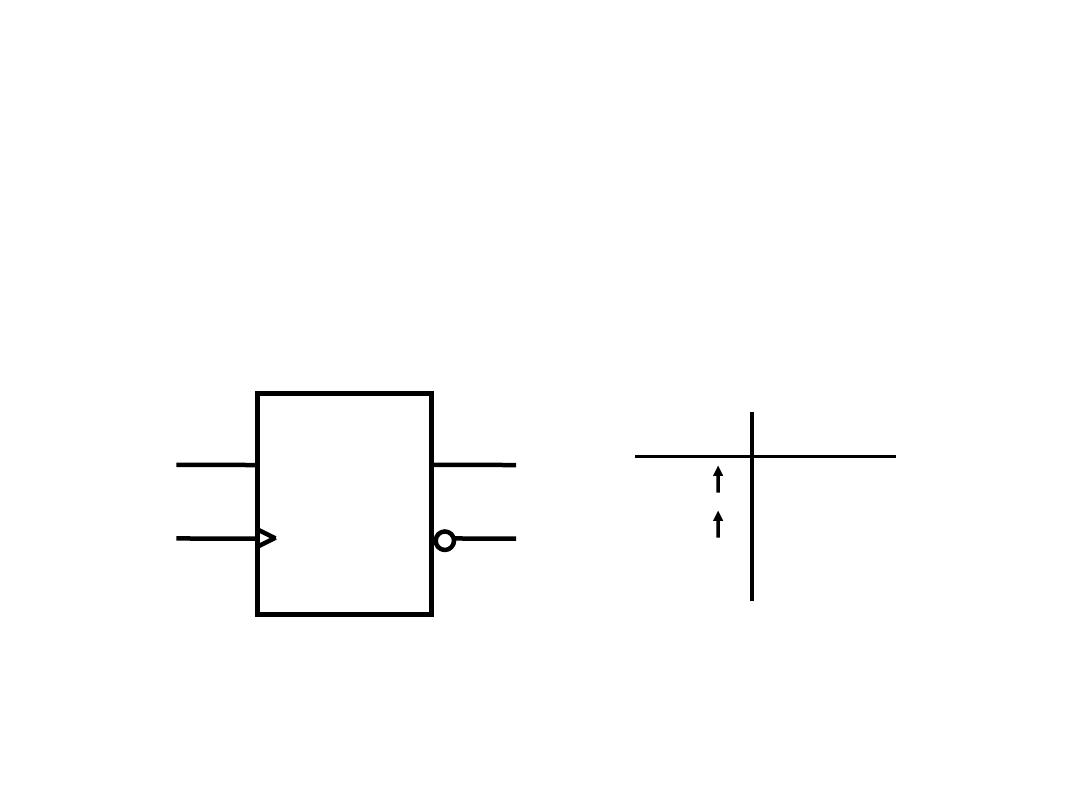
D Flip-Flop
• Stores a value on the positive edge of
C
• Input changes at other times have no effect on output
Dr. AMMAR ABDUL-HAMED KHADER
14
CK
0 0 1
1 1 0
X 0 Q
0
Q
0
’
D
C
Q Q’
Positive edge triggered
D gets latched to Q on the rising edge of the clock.
D
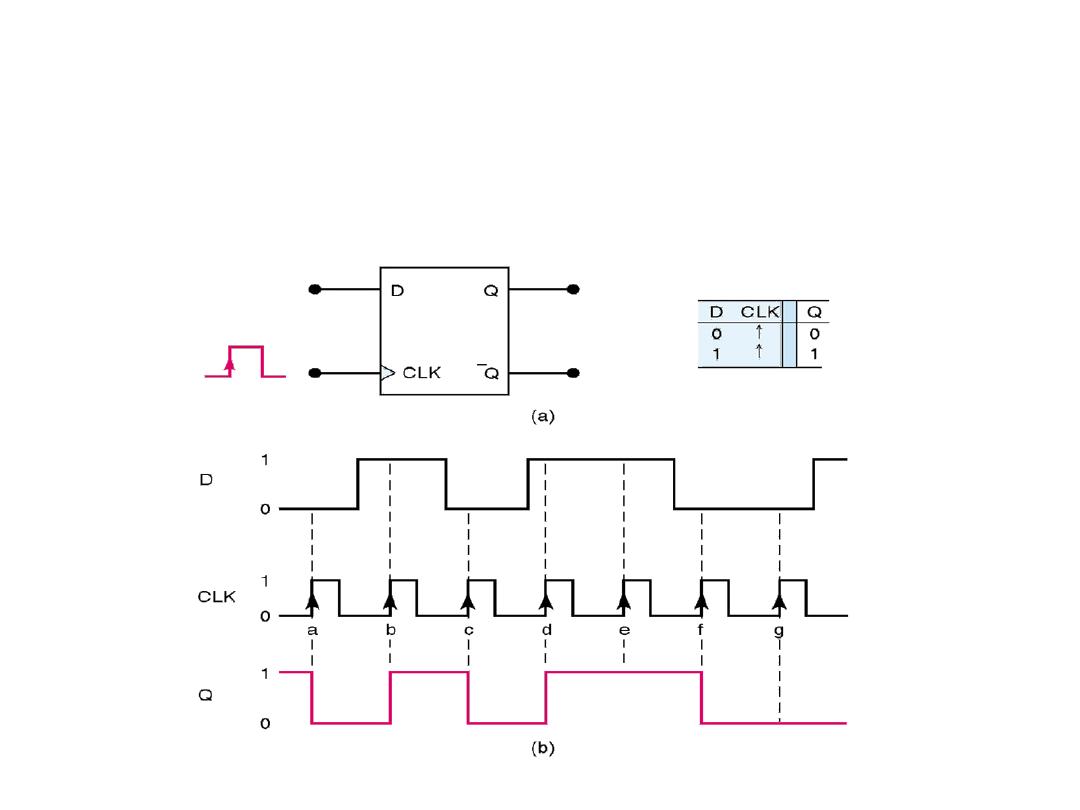
D Flip-Flop
Dr. AMMAR ABDUL-HAMED KHADER
15
Q
n+1
= D
n
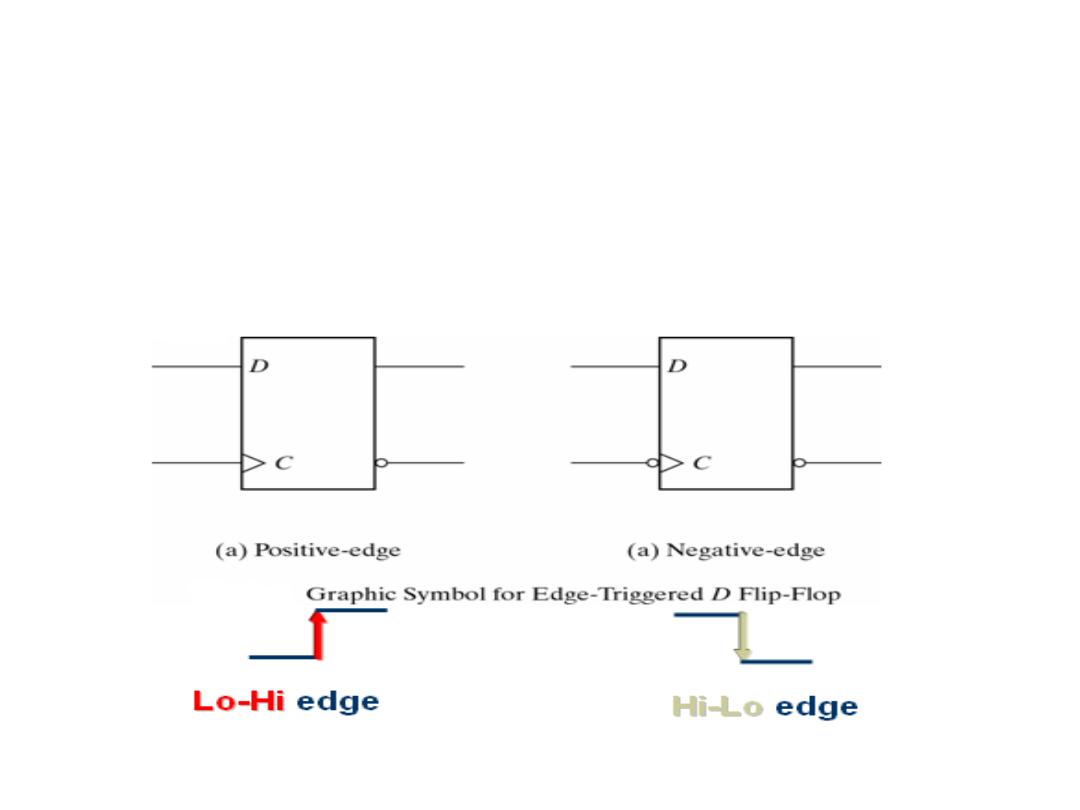
D Flip-Flop
Positive and Negative Edge
• D flops can be triggered on positive or negative edge. Bubble
before
Clock (C)
input indicates negative edge trigger
Dr. AMMAR ABDUL-HAMED KHADER
16
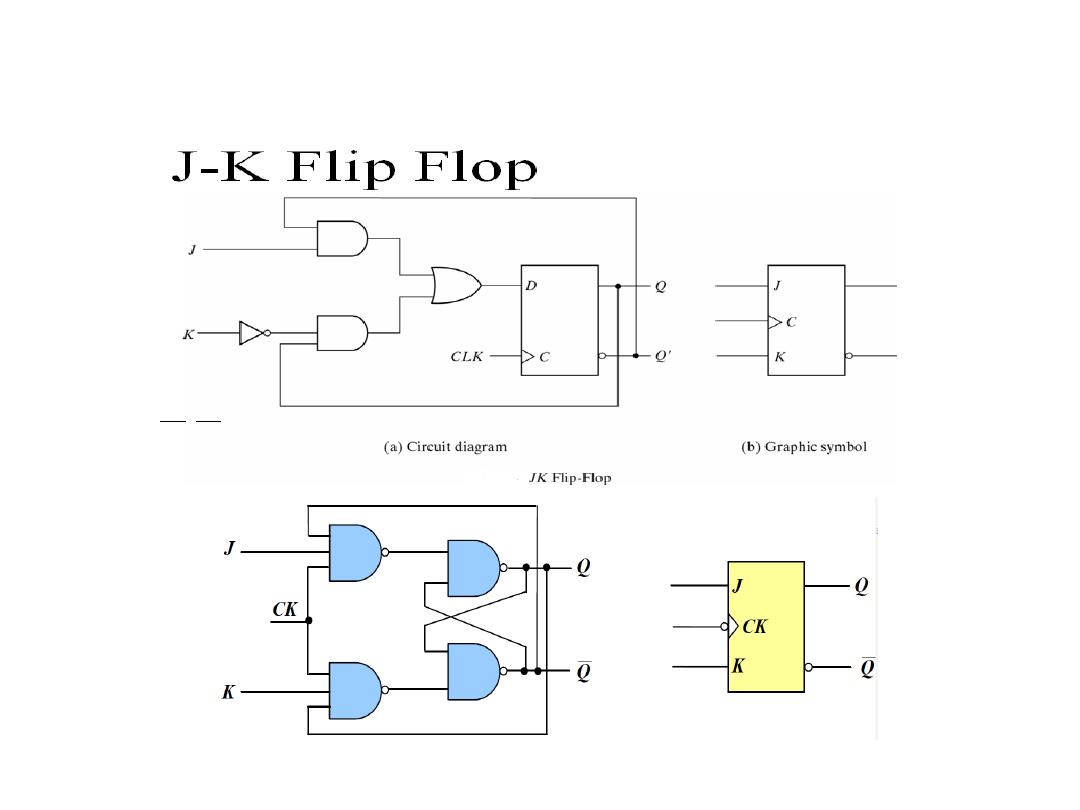
Other Types of Flip-Flops
Dr. AMMAR ABDUL-HAMED KHADER
17
D=J Q+K Q
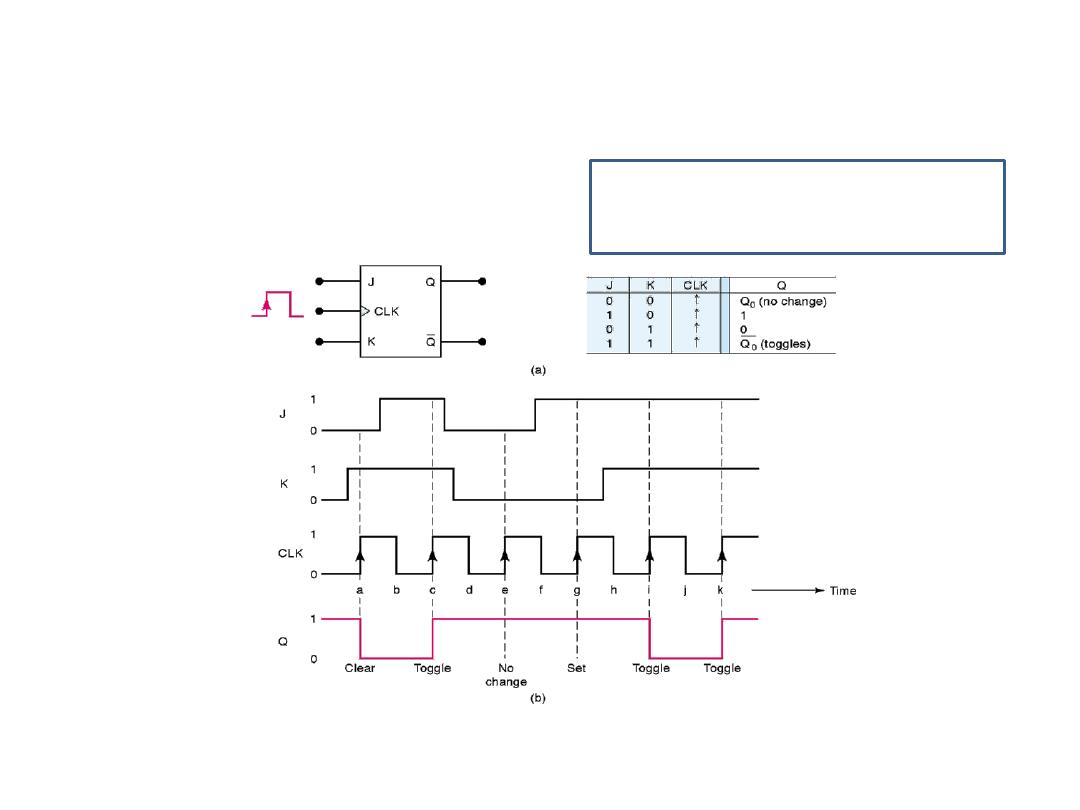
Clocked
Dr. AMMAR ABDUL-HAMED KHADER
18
•
Two data inputs, J and K
•
J -> set, K -> reset, if J=K=1 then toggle
output
Characteristic Table
Or Transition Table
J K differs from RS, because there is
NO not allowed state (11)
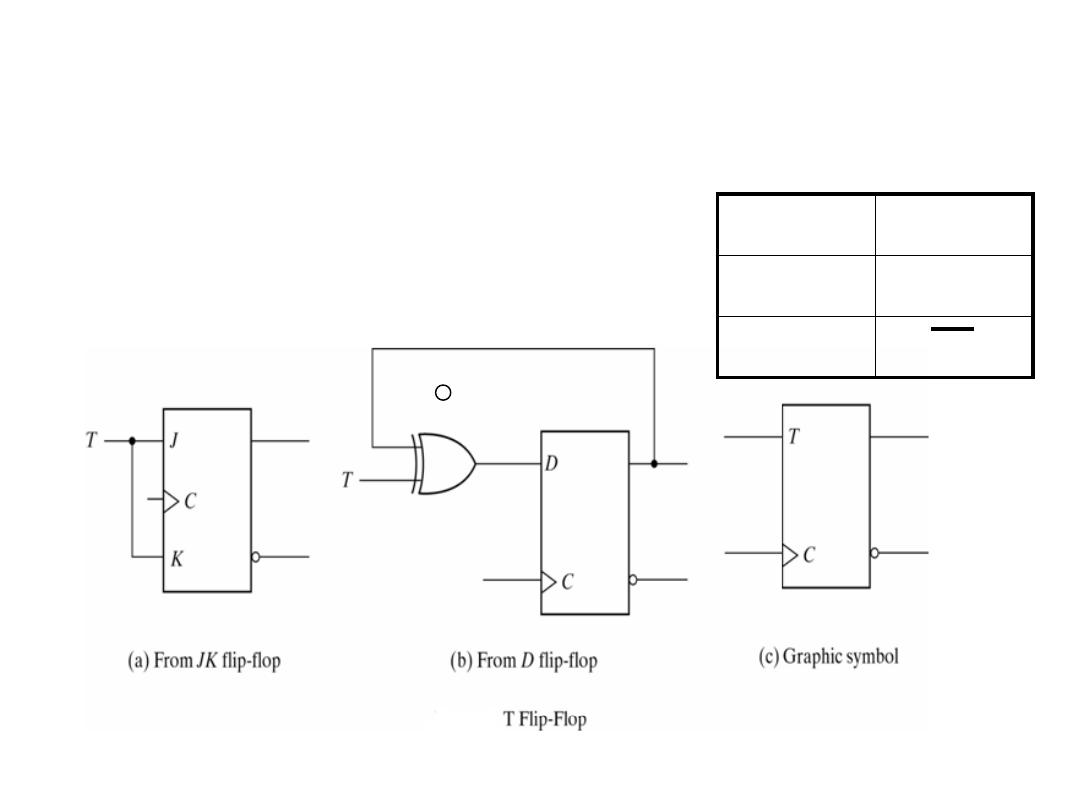
T Flip-Flop
(
Toggle)
Dr. AMMAR ABDUL-HAMED KHADER
19
Q(t+1)
T
Q(t)
0
Q(t)
1
D=T + Q
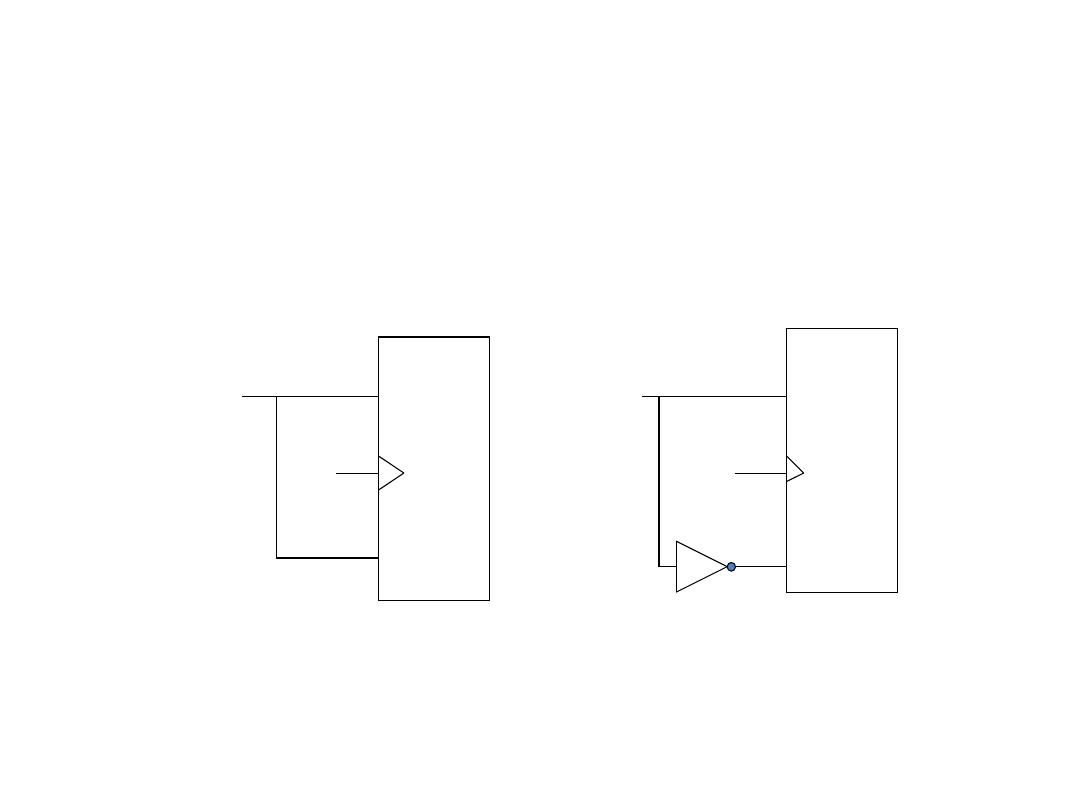
JK Converted to Other FFs
Dr. AMMAR ABDUL-HAMED KHADER
20
J
J
T
K
K
D
C
C
D from JK
T from JK

Summary
Dr. AMMAR ABDUL-HAMED KHADER
21
• Latches are based on combinational gates (e.g. NAND, NOR)
• Latches store data even after data input has been removed
• S-R latches operate like cross-coupled inverters with control inputs
(S = set, R = reset)
• With additional gates, an S-R latch can be converted to a D latch (D
stands for data)
• D latch is simple to understand conceptually
– When C = 1, data input D is stored in latch at the output as Q.
– When C = 0, data input D is ignored and previous latch value is
at the output Q.

Summary
Latch
• – Clock input is level sensitive.
• – Output can change multiple times during a clock cycle.
• – Output changes while clock is active.
Flip-Flop
• – Clock input is edge sensitive.
• – Output can change only once during a clock cycle.
• – Output changes on clock transition.
Dr. AMMAR ABDUL-HAMED KHADER
22
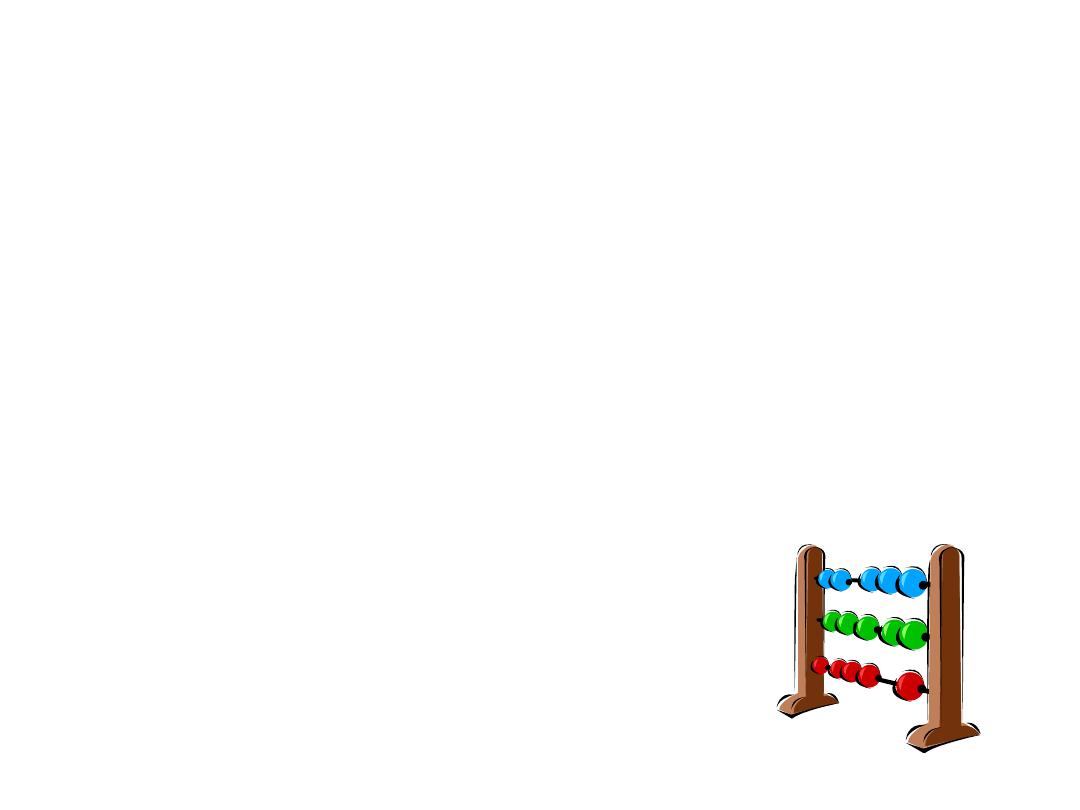
Sequential Circuit
Dr. AMMAR ABDUL-HAMED KHADER
23
• Introduction to Counter
Asynchronous Counter
• Asynchronous Up/Down Counter
Synchronous Counter
• Synchronous Counter Up/Down

Sequential Circuit: Counter
Introduction
• Counter is a circuit which cycle through state sequence
• Two types of counter
– Asynchronous counter (e.g. ripple)
– Synchronous counter (e.g. parallel)
• Ripple counter let some flip-flop output, to be used as clock
signal source for other flip-flop
• Synchronous counter use the same clock signal for all flip-flop
Dr. AMMAR ABDUL-HAMED KHADER
24

Sequential Circuit: Counter
Asynchronous Counter (Ripple)
• Asynchronous Counter : flip-flop doesn’t change condition
simultaneously because it doesn’t use single clock signal
• Also known as ripple counter because clock signal input as
ripple through counter.
• Modulus (MOD) – the number of states it counts in a complete
cycle before it goes back to the initial state.
• Thus, the number of flip-flops used depends on the MOD of
the counter (ie; MOD-4 use 2 FF (2-bit), MOD-8 use 3 FF (3-
bit), etc.
Dr. AMMAR ABDUL-HAMED KHADER
25
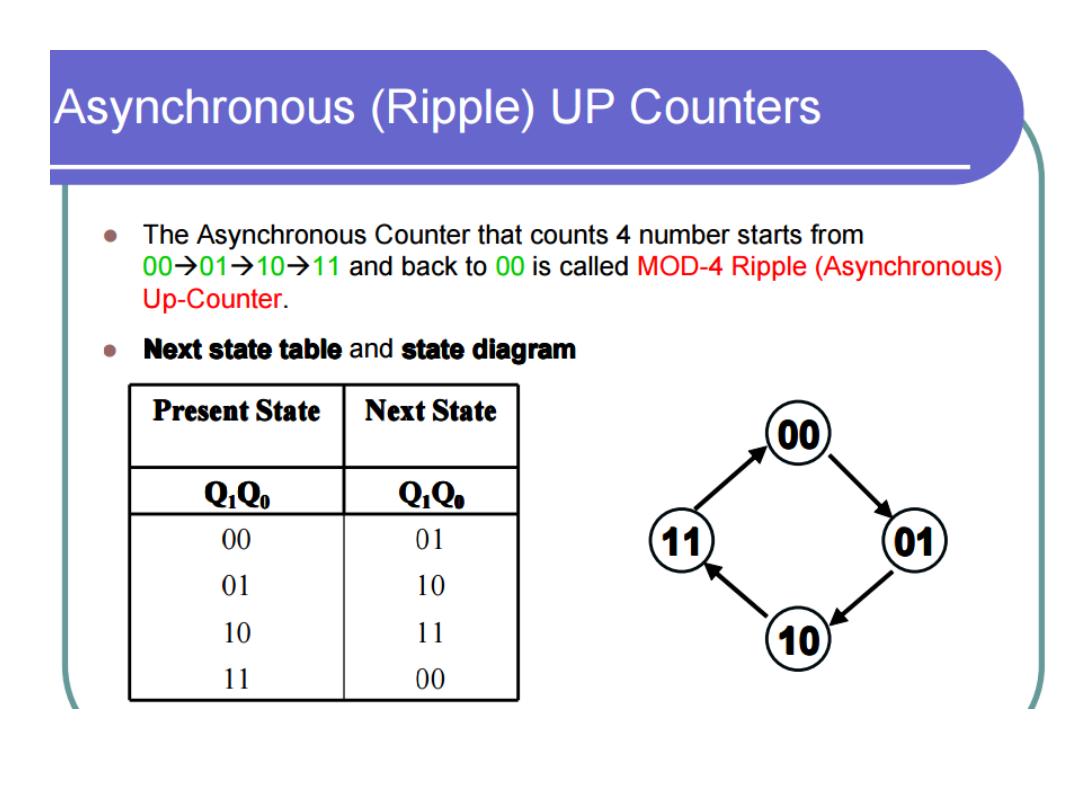
Dr. AMMAR ABDUL-HAMED KHADER
26
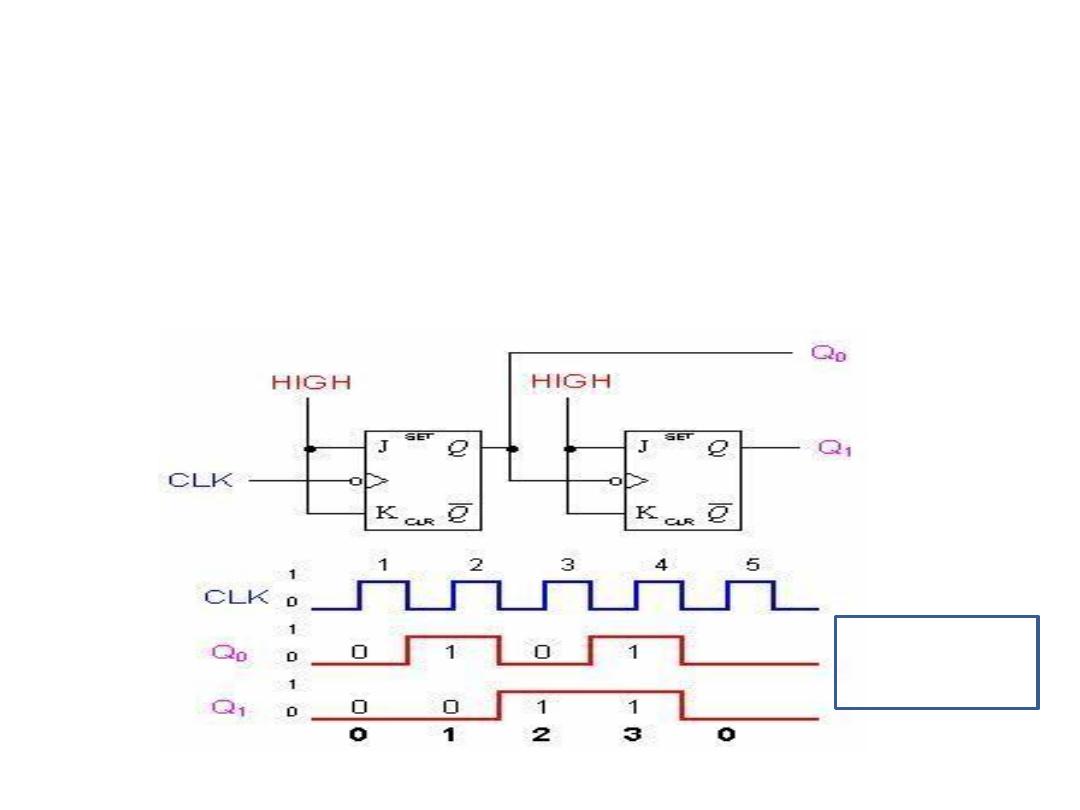
Asynchronous Counter (Ripple)
MOD-4
• Example: 2-bit ripple counter (UP COUNTER)
• Output from one flip-flop is connected to clock input for the
next flip-flop.
Dr. AMMAR ABDUL-HAMED KHADER
27
Timing diagram
00 01 10 11
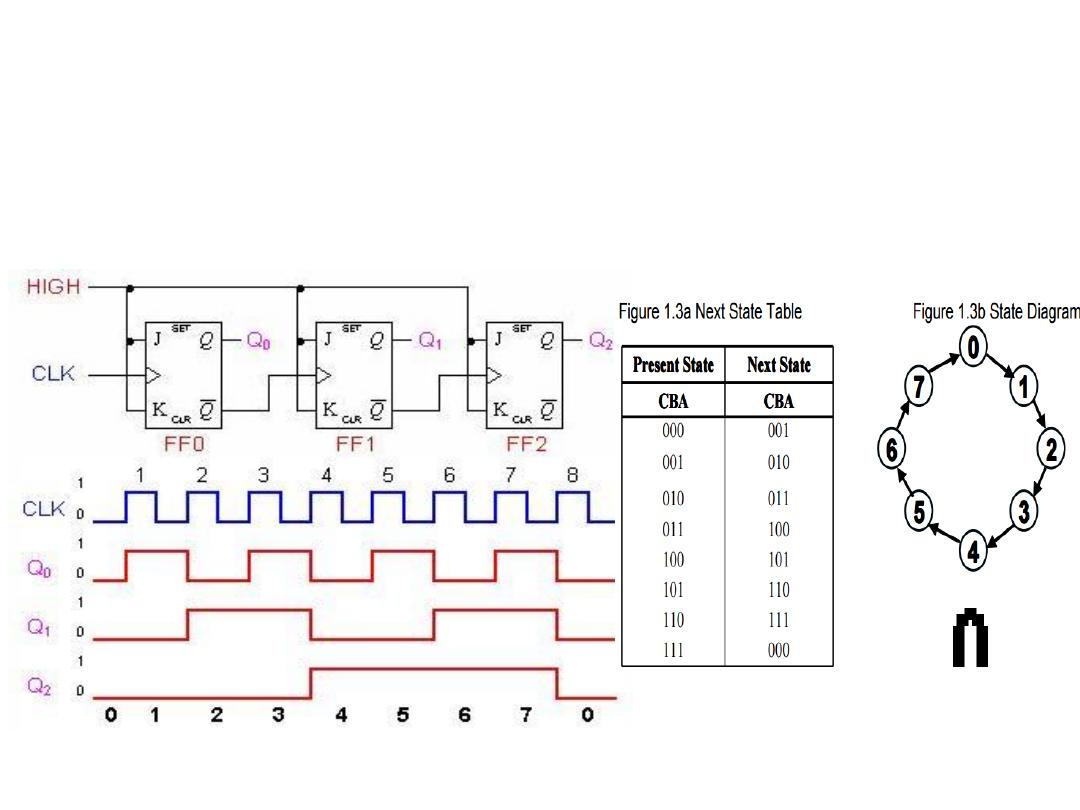
Asynchronous Counter (Ripple)
MOD-8
• Example: 3-bit ripple counter (UP COUNTER)
Dr. AMMAR ABDUL-HAMED KHADER
28
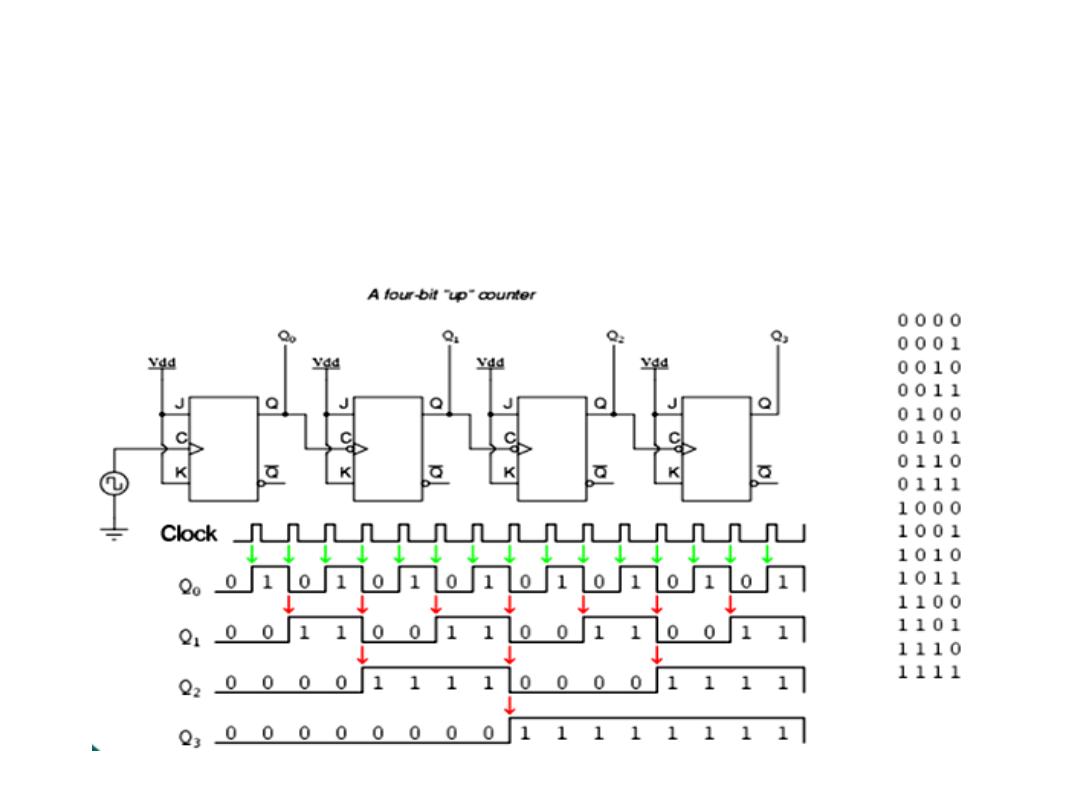
Dr. AMMAR ABDUL-HAMED KHADER
29
Asynchronous Ripple Counter ((UP COUNTER))
• Example: 4-bit ripple counter (negative edge triggered)
Asynchronous Counter (Ripple)
MOD-16
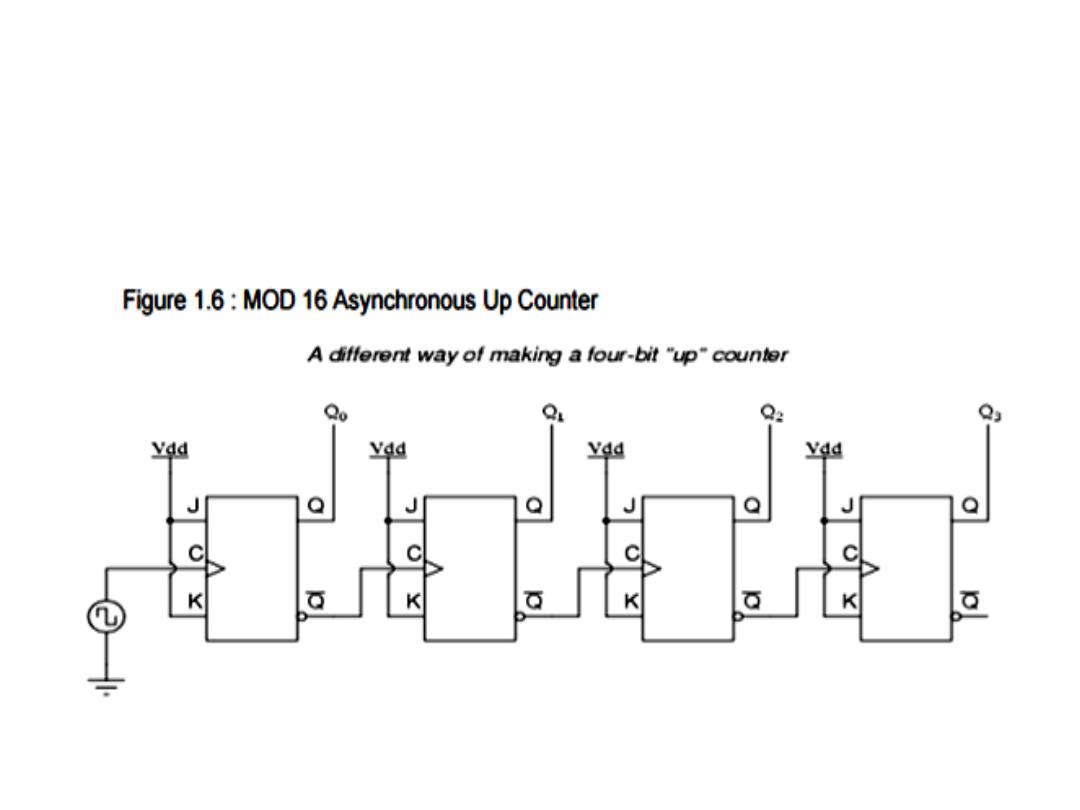
• (Positive edge triggered)
Dr. AMMAR ABDUL-HAMED KHADER
30
Asynchronous Counter (Ripple)
MOD-16

Asynchronous Down Counter
Binary Ripple down counter
• For positive edge triggered flip-flops the counter count down:
• e.g start from15 to 14 to 13 to…….
• The diagram is same as the count up binary counter except that
the flip-flop trigger on the positive edge of the clock.
• If negative edge triggered flip-flops are used then the CLK
input of each flip-flop must be connected to the complement
output of the previous flip-flop. So, when the true output goes
from 0 to 1, the complement will go from 1 to o and
complement the next flip flop as required
Dr. AMMAR ABDUL-HAMED KHADER
31
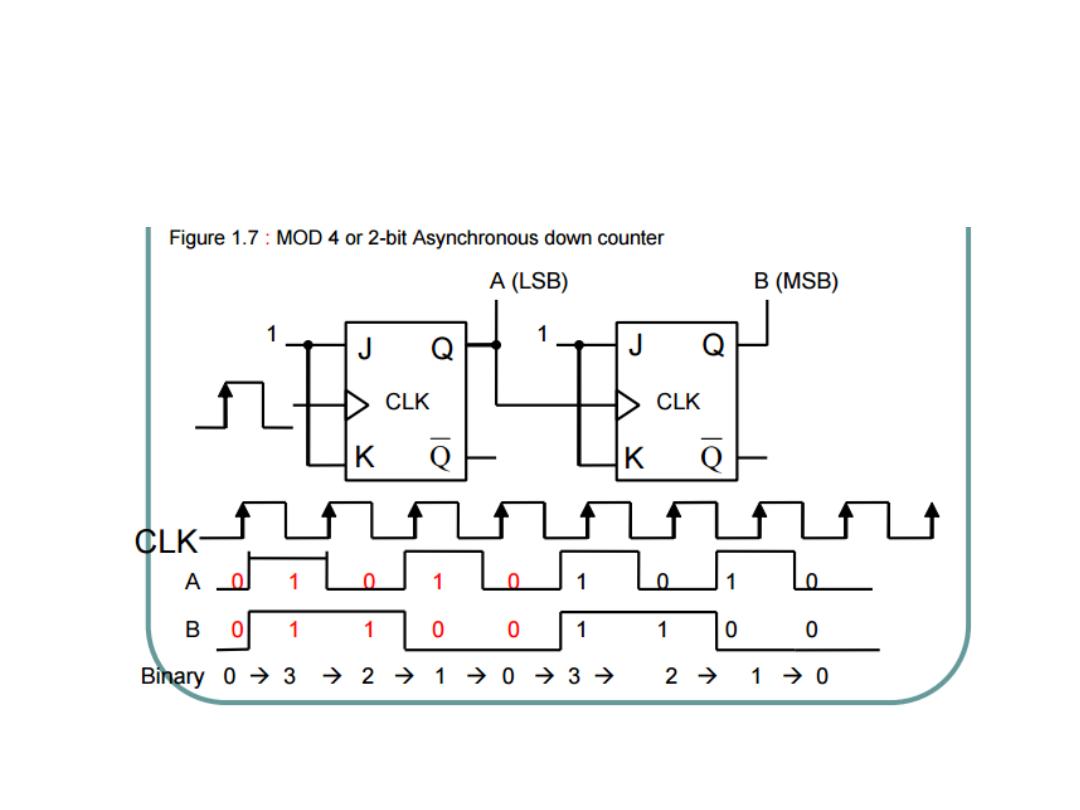
Asynchronous Down Counter
• 2-Bit Binary Down Counter
Dr. AMMAR ABDUL-HAMED KHADER
32
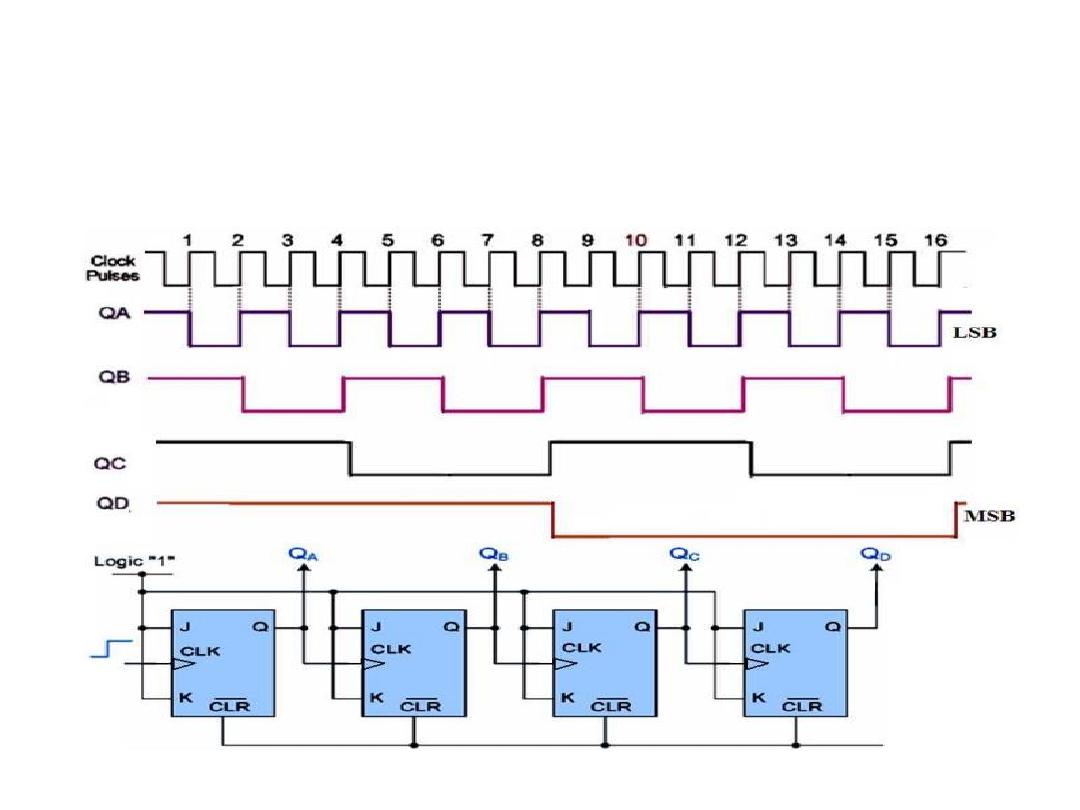
Asynchronous Down Counter
• 4- Bit Binary Down Counter
Dr. AMMAR ABDUL-HAMED KHADER
33
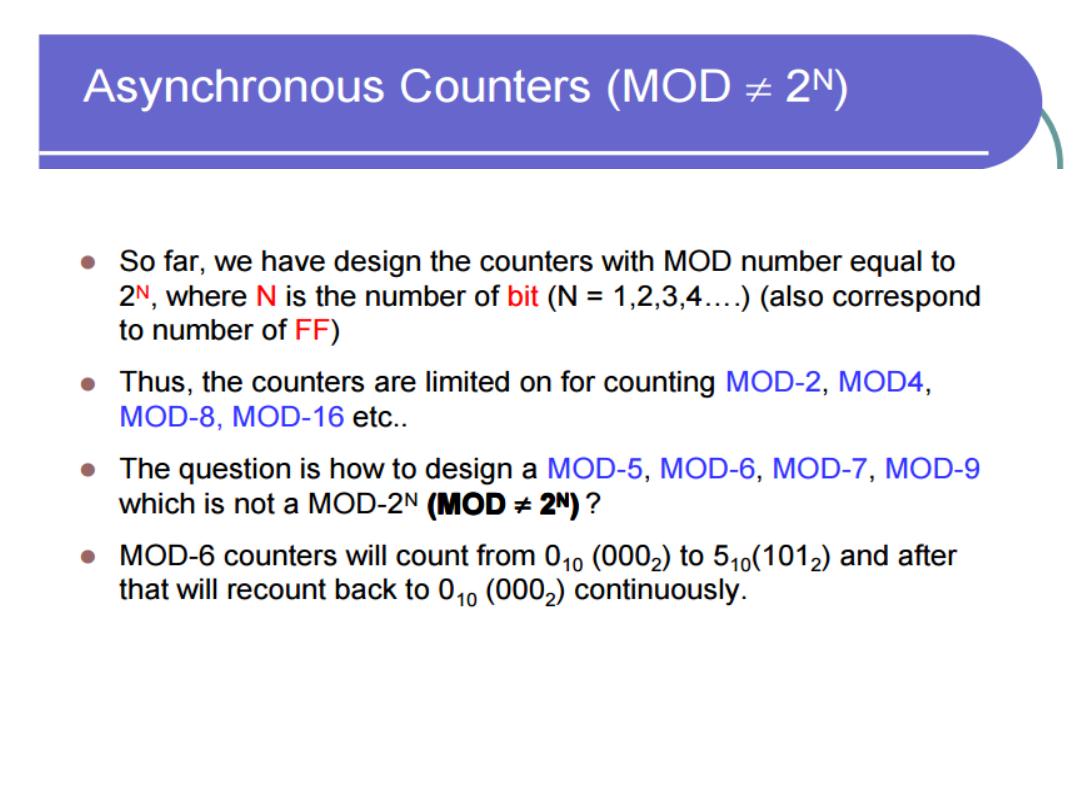
Asynchronous Counter MOD NOT 2
Dr. AMMAR ABDUL-HAMED KHADER
34
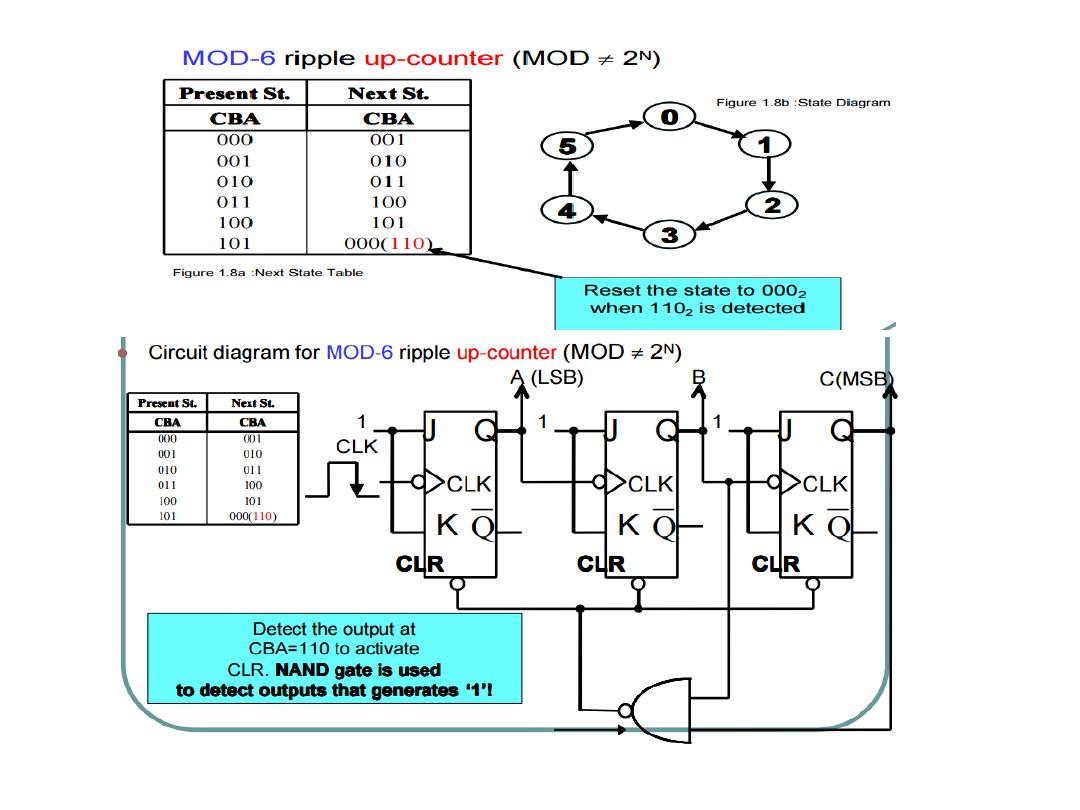
Dr. AMMAR ABDUL-HAMED KHADER
35
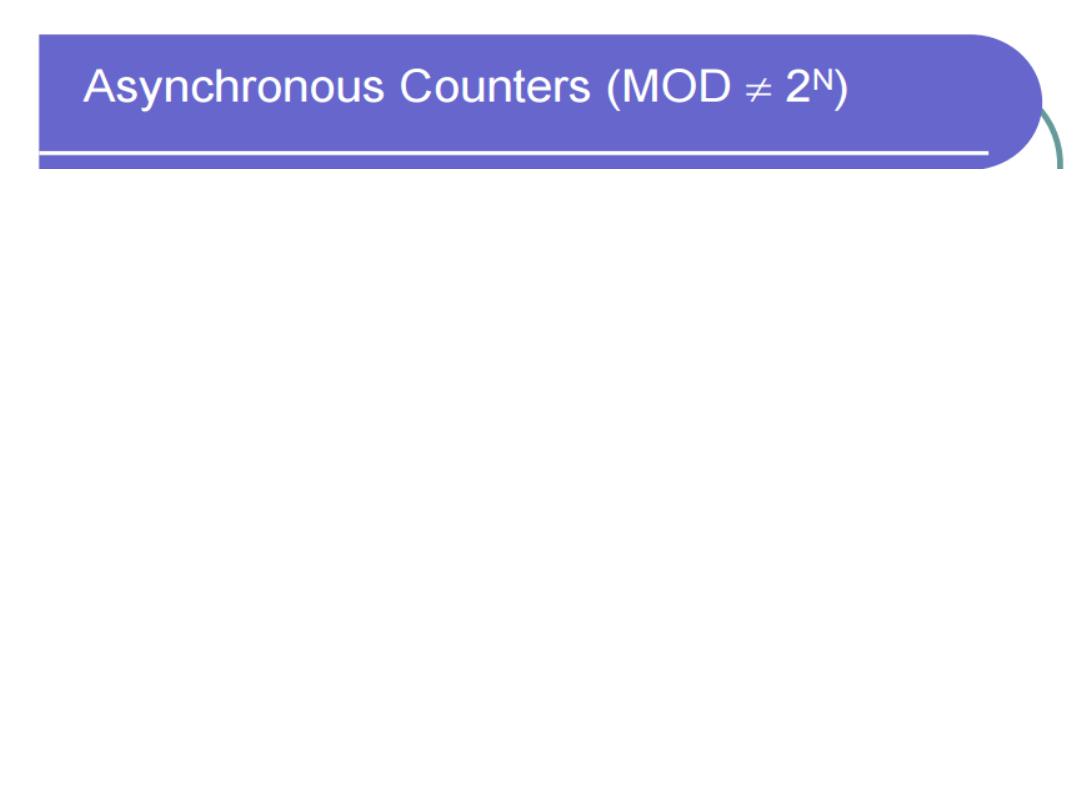
• Example: Show how an asynchronous counter can be
implemented having a modulus of twelve with a straight
binary sequence from 0000 to 1011.
• Solution: Four FF are required. When the counter gets to
its last state 1011, it must recycle back to 0000 rather than
going to its normal next state (1100)
Dr. AMMAR ABDUL-HAMED KHADER
36
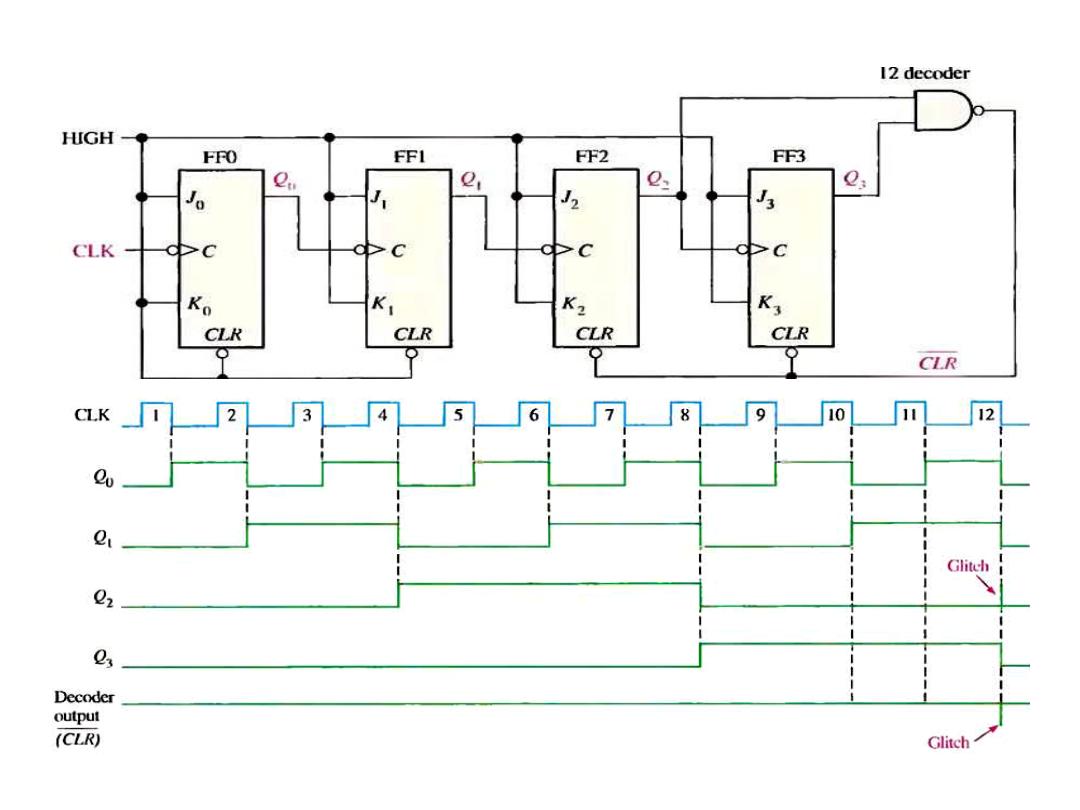
Dr. AMMAR ABDUL-HAMED KHADER
37
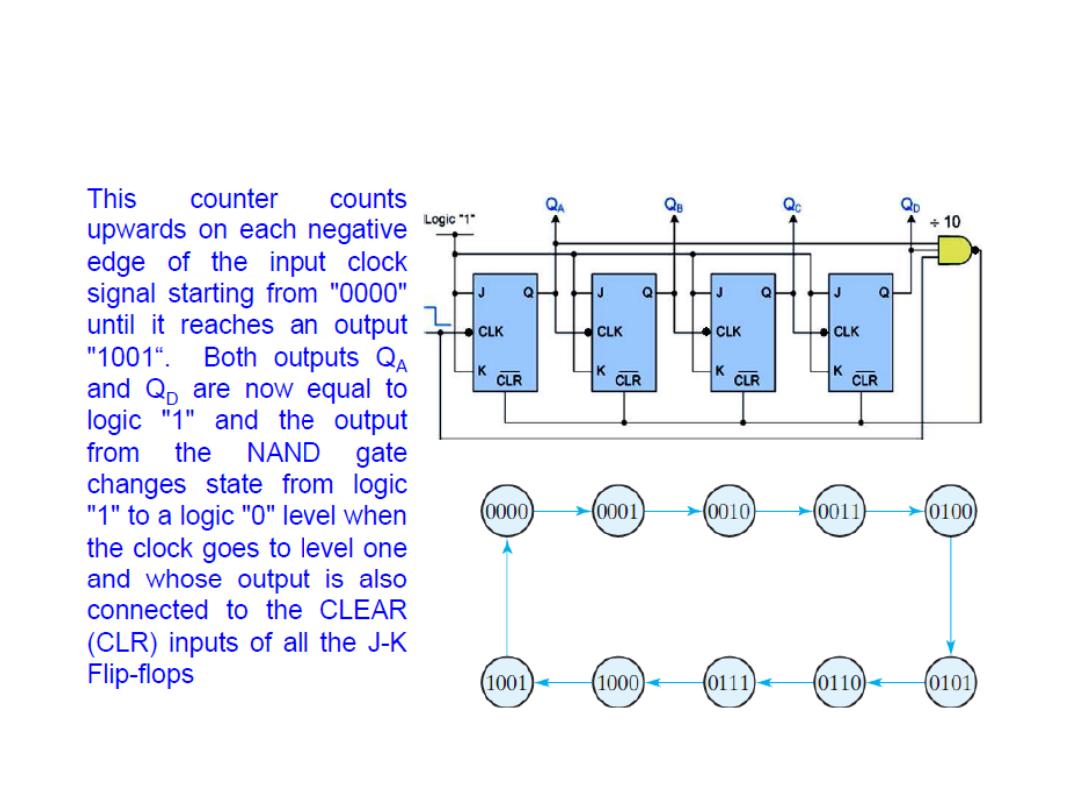
BCD Ripple Counter, Decade Counter
Dr. AMMAR ABDUL-HAMED KHADER
38
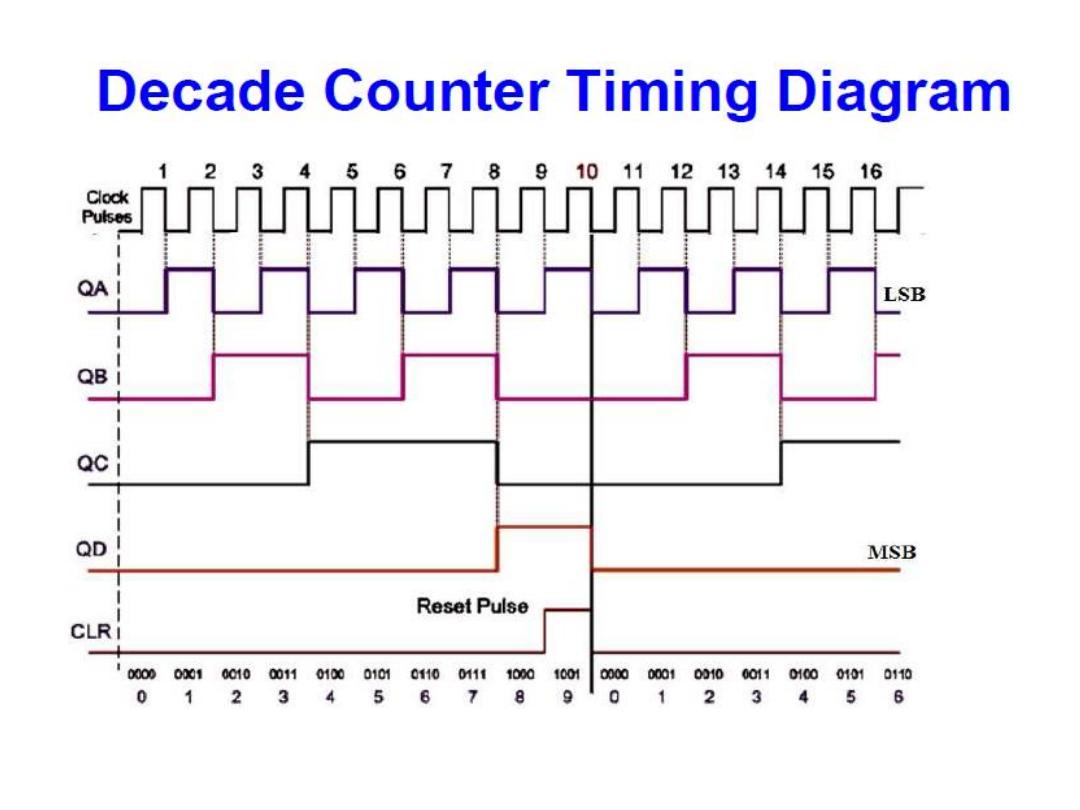
Dr. AMMAR ABDUL-HAMED KHADER
39
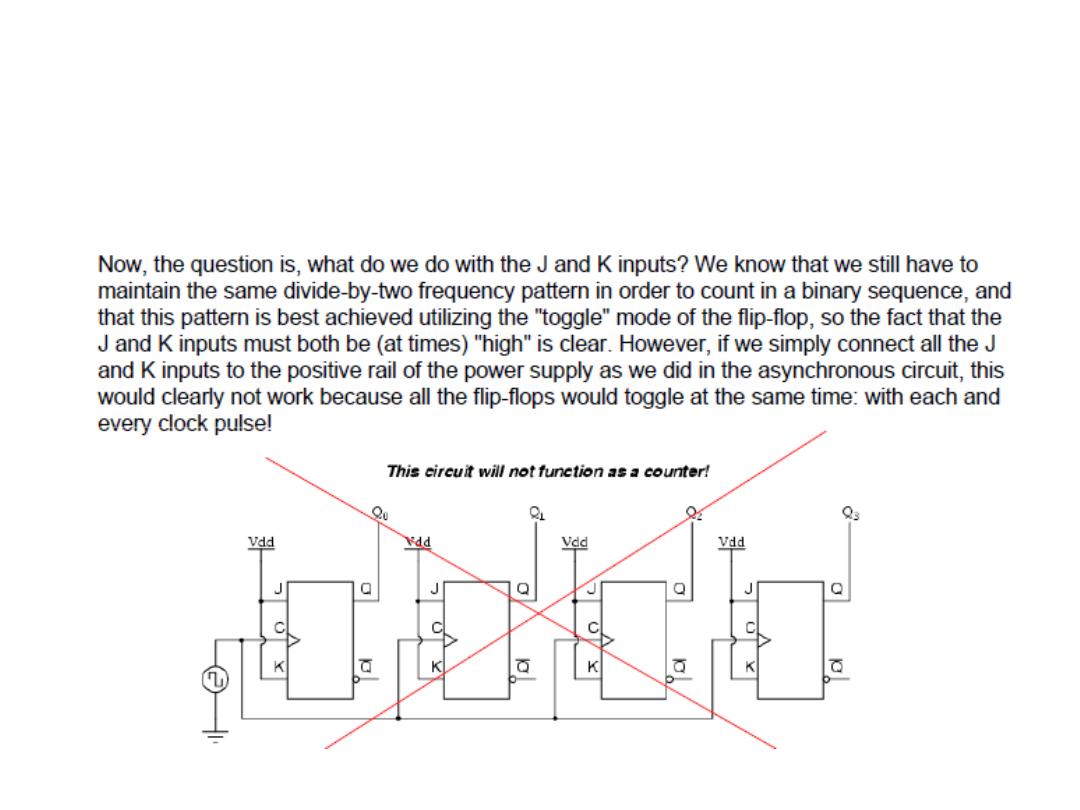
Synchronous Counters (Parallel)
• FFs in the counter are clocked at the same time by a common clock
pulse.
Dr. AMMAR ABDUL-HAMED KHADER
40
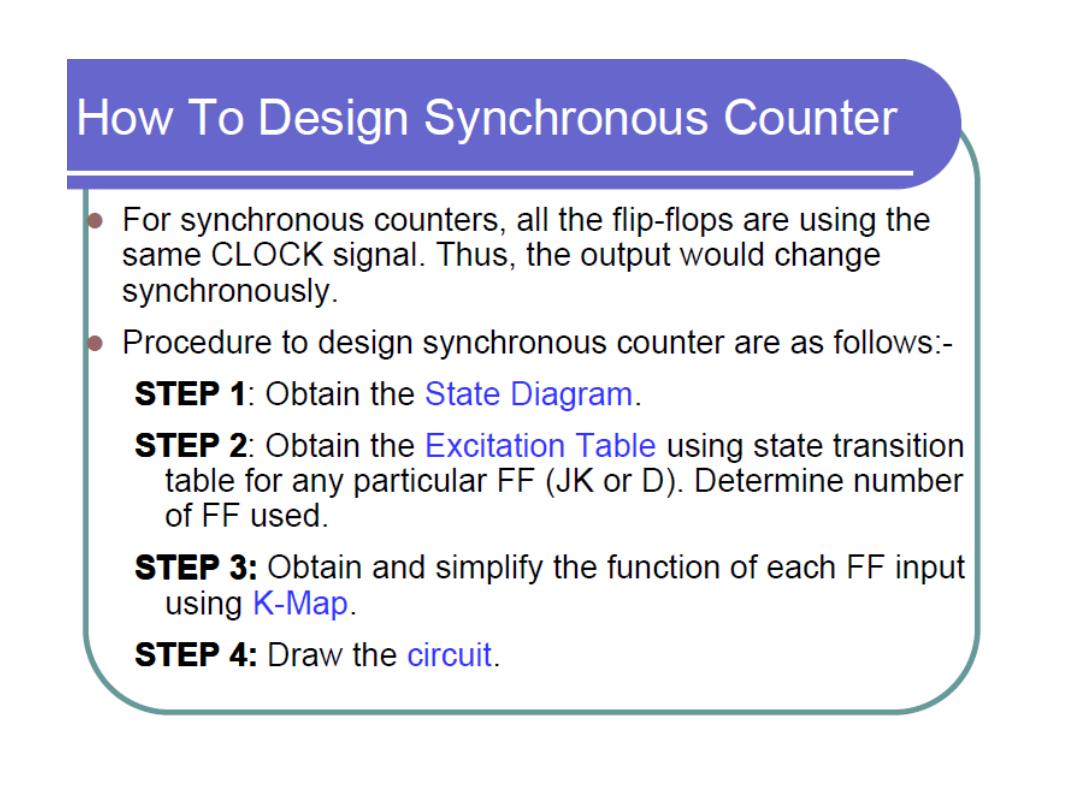
Dr. AMMAR ABDUL-HAMED KHADER
41
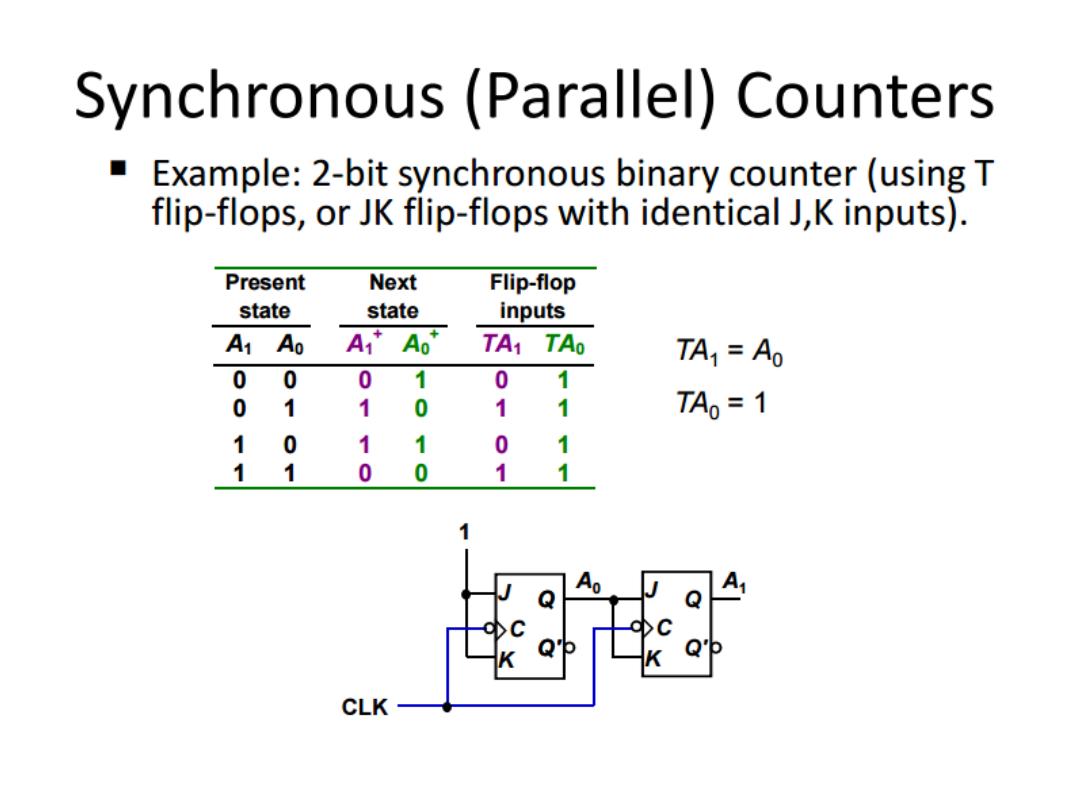
Dr. AMMAR ABDUL-HAMED KHADER
42
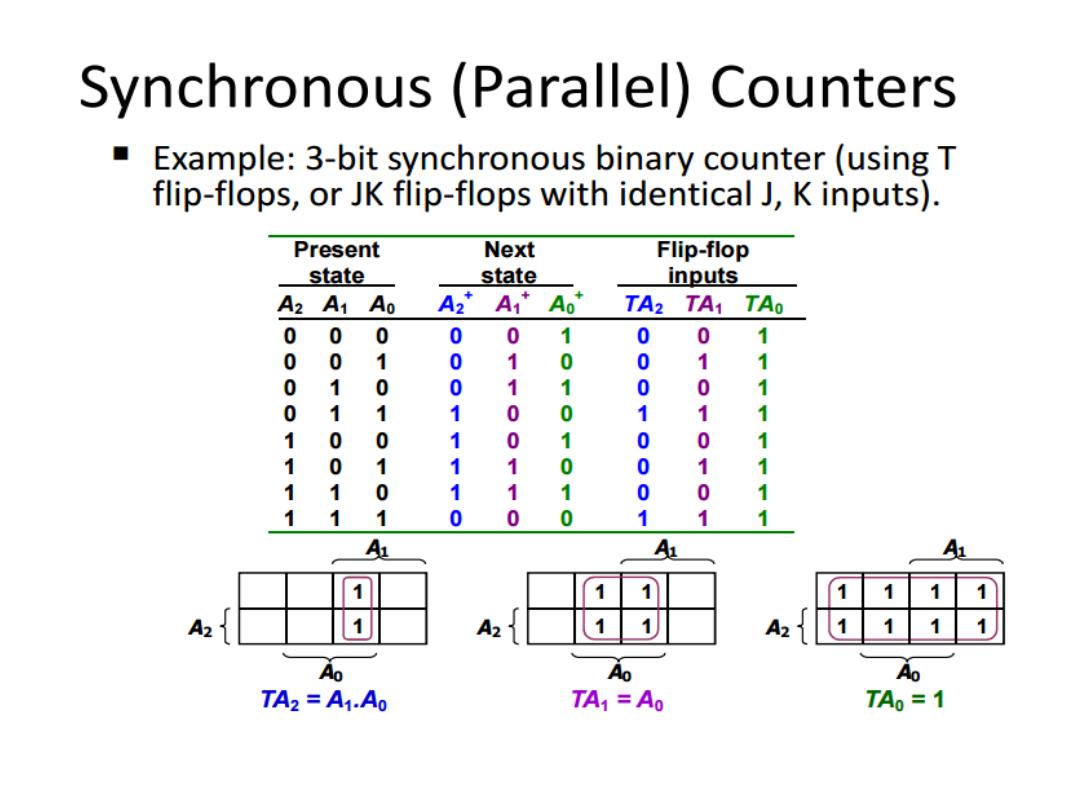
Dr. AMMAR ABDUL-HAMED KHADER
43
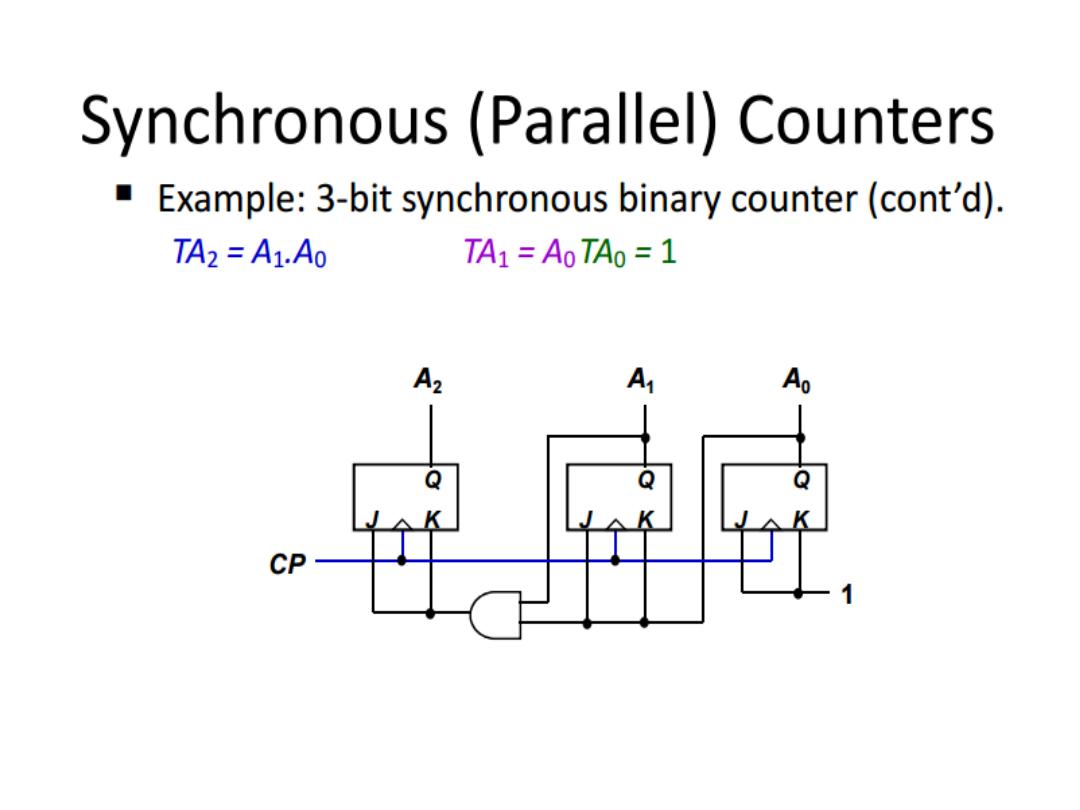
Dr. AMMAR ABDUL-HAMED KHADER
44
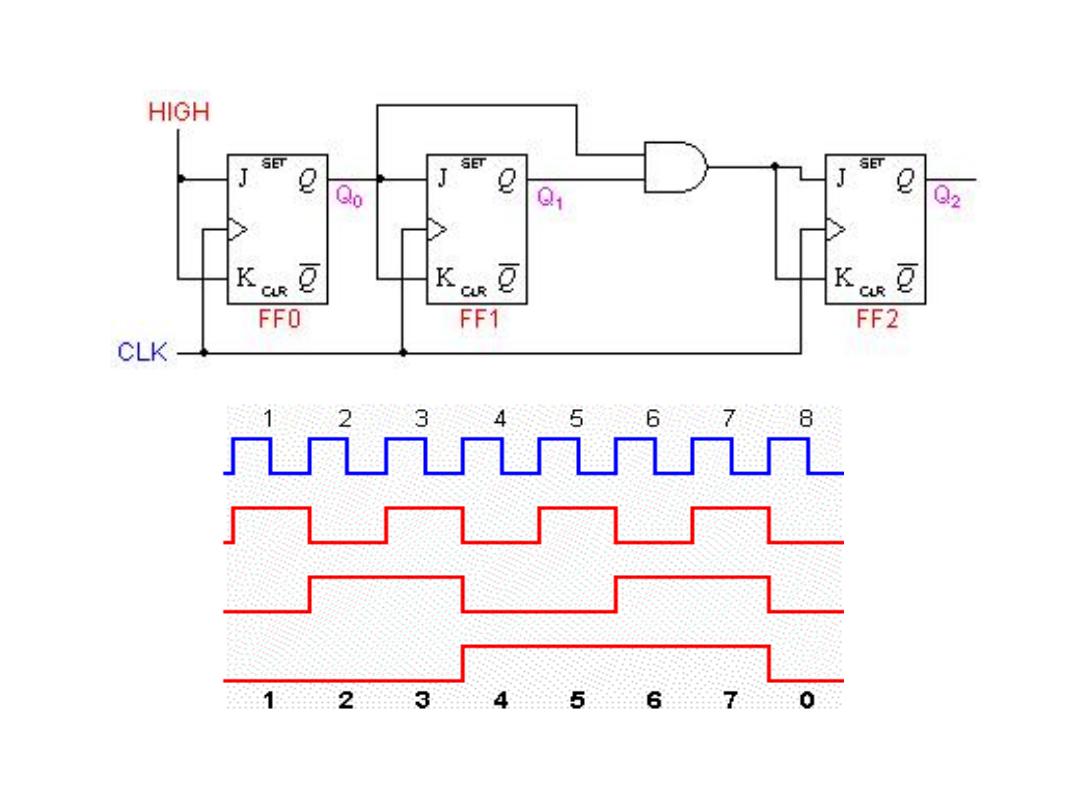
Dr. AMMAR ABDUL-HAMED KHADER
45
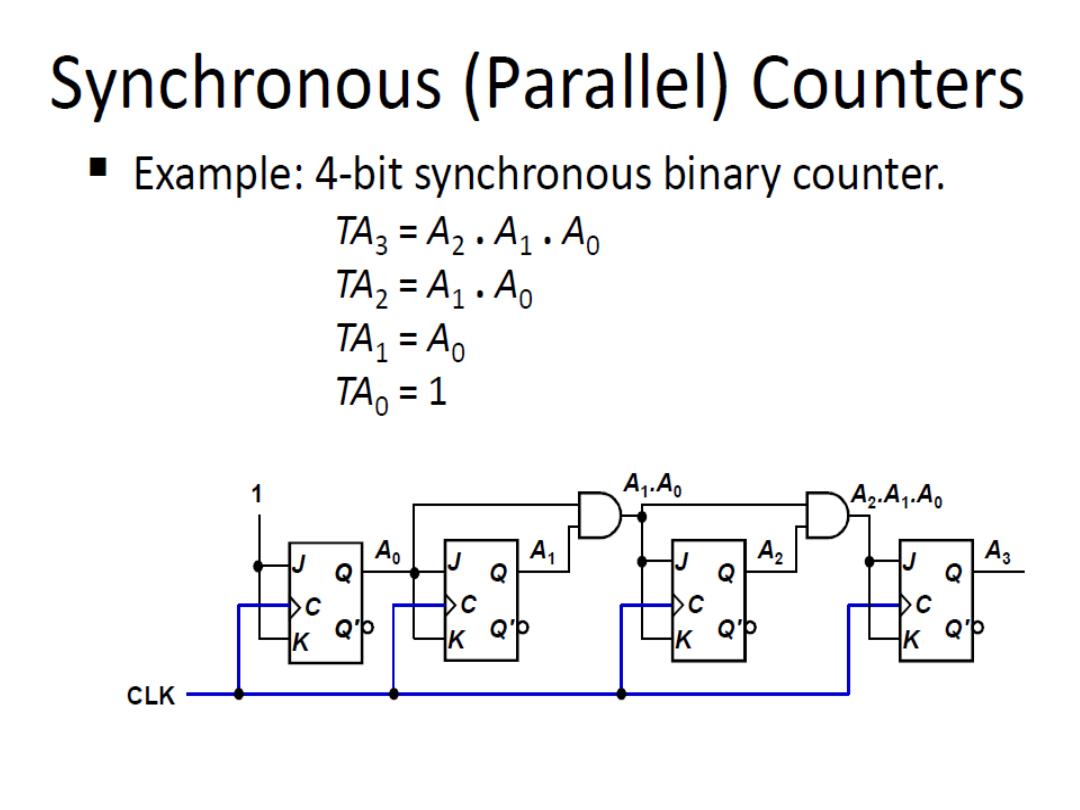
Dr. AMMAR ABDUL-HAMED KHADER
46
